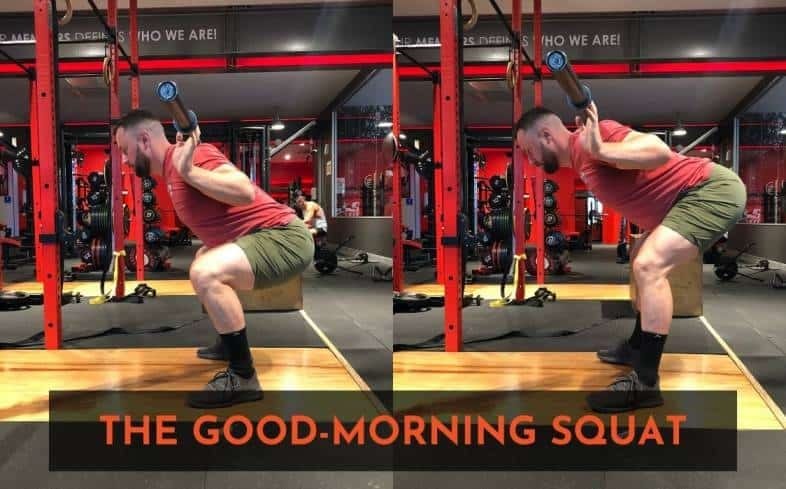Last week’s newsletter showed a clear trend for reader requests. Most of you want more information on squats, so we’re diving into that category this week. Below we’ll also share some tips from powerlifting coaches and an exclusive discount on our on-demand powerlifting courses.
This Week’s Resources
The Most Overrated Powerlifting Exercise (YouTube)
Pursuit of Strength (Use code AUTUMNSTRENGTH for 40% Off)
Partner Message
Here’s a message from one of our partners. These types of offers help us keep the Powerlifting Technique newsletter free. Note that we evaluate each of our partners and only choose those we feel have something beneficial to offer.
Your IRA, made to order
Choose where and when you want to retire, and a Betterment IRA can help make your money hustle all the way there.
Do You Need to Squat Ass-to-Grass?
Whether or not you squat ass-to-grass is one of the most contentious topics in strength training circles.
“Ass to grass squats are when you bring your hips down as far as possible, traveling well below the parallel plane of your knees.”
More specifically, the endpoint of the movement doesn't stop because you make a conscious effort to decelerate the barbell and begin the upward phase.
The endpoint occurs when you literally can't go any deeper and you have no option but to go up.
You have some coaches who believe that anything shy of squatting full depth is ineffective. You have others who believe that the risks far outweigh the benefits when it comes to squeezing out a few more inches of depth.
So, should you squat ass-to-grass?
Squatting ass-to-grass should be used if your sport or activity demands require that you build strength in deep knee flexion.
For Olympic weightlifters, squatting ass-to-grass is beneficial. For powerlifters, bodybuilders, and other strength athletes, squatting ass-to-grass should only be used for specific purposes, but not all the time.
Pursuit of Strength: An Online Course for Powerlifters
Imagine you’re at a comp.
Your first squat was OK, your second stalled coming out of the hole… this is your last attempt to put together a competitive lift.
Months of intense preparation, back-breaking workouts and stubborn discipline are condensed into 60 seconds.
How you approach the bar is vital.
How you unrack the bar matters.
And how you move the bar absolutely counts.
Yet, technique is something many powerlifters learn the basics of, then take for granted.
That’s why we designed Pursuit of Strength. It’s a course focused exclusively on building powerlifting techniques. . . and it’s taught by a world-class athlete.
While I can’t coach you in-person, I can show you practically everything I look for when building techniques from the ground up. With this online course, you’ll learn the 14 principles of powerlifting that every one of my students, from first-time beginners to World Champions, follow and practice every time they approach the bar.
And ultimately, you’ll build the confidence — backed by some of the best coaching you can get — to take each of your lifts to the next level.
And there’s a discount especially for you. Use the code AUTUMNSTRENGTH in your cart to get 40% off the course price.
New Video: Are Deadlifts Bad For You?
We just released this video on our YouTube channel, and we’d love to get your thoughts. Leave us a comment and subscribe to see more videos as they’re released.
There are several new videos over the past week. Be sure to check out our video on the most overrated powerlifting exercise, too.
What’s the Good Morning Squat (And How Do You Fix It?)
The good-morning squat is a very common technical deficiency where the hips rise excessively fast out of the bottom of the squat.
This will push the lifter forward onto the front part of their foot where they feel off-balance trying to stand up with the weight. Their torso will also start to lean forward and their back angle becomes more parallel to the floor.
It's really important though that you don't think that a ‘forward torso lean' is a bad thing. I encourage you to read my article on leaning forward in the squat, where I discuss that there is a range of optimal torso angles for squatting based on your limb lengths.
The key way to tell if you have a good-morning squat, which requires fixing, is looking at how fast your hips rise out of the hole. Are they rising at the same tempo as your shoulders? Or are they rapidly shooting up and behind? If rapidly shooting up and behind, you have a problem.
What do you need help with?
How to Break Through a Squat Plateau
Have you plateaued on squat performance? Here’s what you need to know. This is the full guide with 9 ways to break through a squat plateau.
You can read the full guide to get all nine methods, but we wanted to share at least one right here in the newsletter.
One major fix for breaking a squat plateau: Fix your stance.
If the feet are too close together during your squat, we may be working harder than necessary to hit depth and struggle to stand back up out of the hole. It is worth experimenting with widening our stance to at least hip width, or a little wider, and then assessing how our movement changes.





